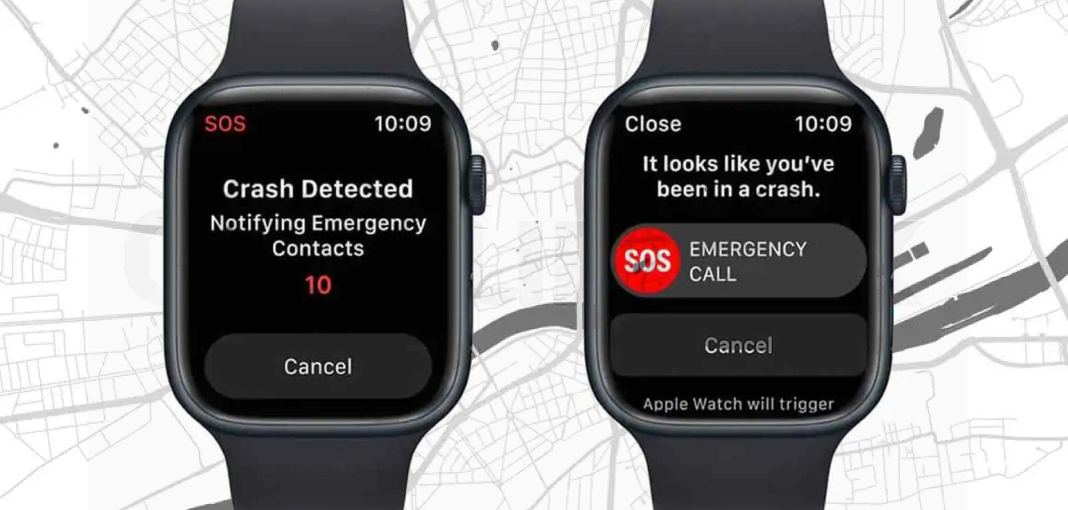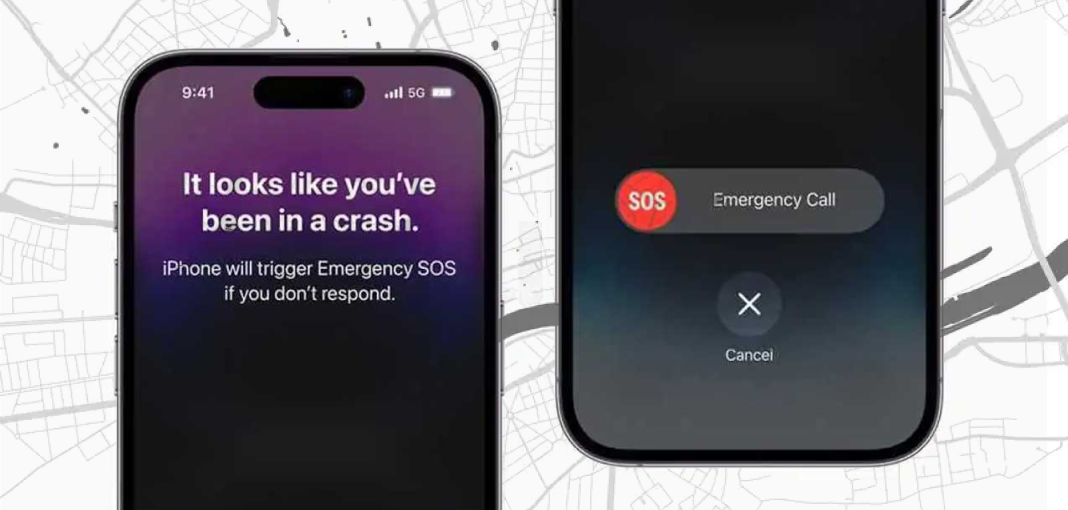When a severe car accident is detected, an iPhone or Apple Watch that is supported by the crash detection system will sound an alarm and display an alert. If the user is able to do so, they can call emergency services either by swiping the Emergency Call slider on their iPhone or Apple Watch or else dismiss the displayed alert entirely.
However, if the user does not respond at all to the alerts within 10 seconds of it being presented to them, the device will begin another countdown lasting for 10 seconds. If there has still been no response from the user whatsoever, the device will automatically call the emergency services.
Crash Detection is specifically designed to identify severe car crashes, such as front-impact, side-impact and rear-end collisions, as well as rollovers. It works with saloons, minivans, 4X4s, pickup trucks and other passenger cars.
Crash Detection works on these iPhone and Apple Watch models:
Emergency calls use a mobile data connection or Wi-Fi Calling with an internet connection from your Apple Watch or iPhone.
Apple Watch
The new high G-force accelerometer samples data four times faster than the previous model and is capable of measuring up to 256g of force. Apple also built a fusion algorithm that’s trained on car accident data. In addition to motion sensors, Crash Detection also uses a barometer, GPS, and the microphone on your iPhone to detect patterns of a severe crash.


iPhone
The new iPhone 14 models, similar to the Apple Watch Series 8, include upgraded hardware that can identify 256g of force. They come with a high-dynamic range gyroscope and a new dual-core accelerometer. If you have a new Apple Watch and a new iPhone, they will work together to help you should you ever need it in a car accident.


The question everyone is asking is ‘does it actually work?’.
The new crash detection feature is not something you can just try out, or particularly would want to.
Thankfully, a longstanding tech YouTuber, TechRax, answered everybody’s questions and curiosity by testing out the crash detection function on the new iPhone 14.
In the video, he attached the iPhone 14 to the inside of a car and simulated a real-life car crash. Watch the video below to see what happened.
On supported iPhone and Apple Watch models, Crash Detection is turned on by default. You can also take these steps to make sure your device is able to share the information that your emergency contacts and emergency responders need.
To alert your emergency contacts and share your Medical ID with emergency responders, set up your Medical ID and your emergency contacts in the Health app.
To share your location with your emergency contacts, turn on Location Services for Emergency SOS:
Some cars already have crash detection technology built in, and some people would rather not add to the confusion by having both their car and phone trying to report an accident should it happen.
Turn off on iPhone:
Turn off on apple watch:
Speak to a Non-Fault Claim Specialist
We manage everything on your behalf, ensuring that the claims process is as smooth and stress-free as possible.
Back to the top

Being in any type of car accident is a frightening situation. Knowing what to do in a car accident is important to ensure your safety. It’s also really important for a successful claim afterward, especially if you weren’t at fault.
If you need any advice after a non-fault accident and need to start a non-fault claim, auto claims assist are here to help and will:
Auto Claims Assist
First contact after a car accident
Start my claim online Call us on 0330 128 1407